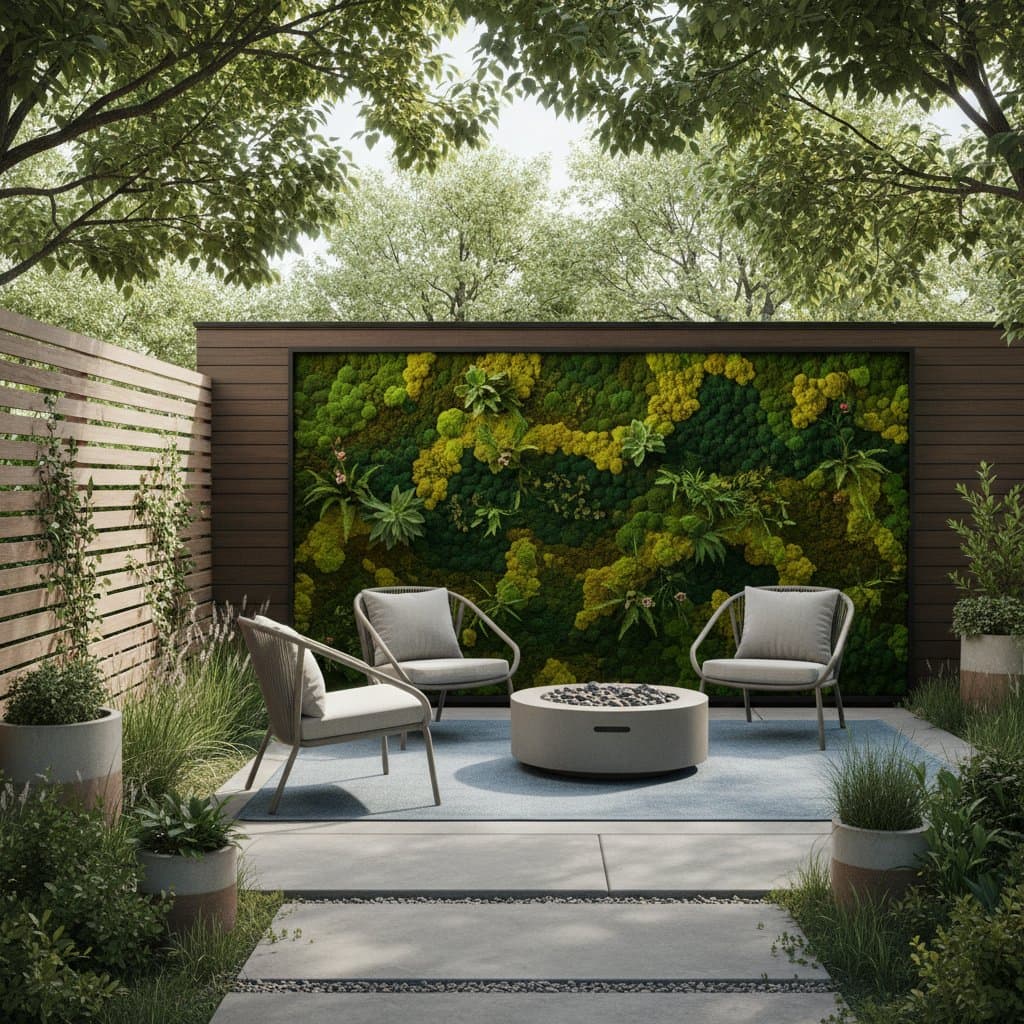Moss Walls: Achieving Garden Serenity with Advanced Sound Control
Homeowners often face the annoyance of external noises intruding on their outdoor spaces. Sounds from traffic, neighbors, and air conditioning units can turn a peaceful garden into a place of unwanted echoes. Moss walls provide an effective solution, offering both aesthetic charm and superior acoustic performance that surpasses traditional barriers.
The Challenges of Noise in Outdoor Settings
Outdoor areas pose distinct acoustic issues unlike those indoors. Indoor rooms benefit from carpets, curtains, and walls that absorb sound waves. In gardens, hard surfaces like concrete walkways, building facades, and wooden fences reflect noise, allowing it to travel farther. Wind exacerbates this by dispersing sounds across open spaces. Although solid fences or dense hedges block views, they rarely reduce noise sufficiently. Moss walls integrate natural sound absorption directly into the landscape for better results.
How Moss Walls Absorb Sound Effectively
Key Steps for Moss Wall Installation
Approach moss wall installation with careful planning to ensure success. For live moss, build a strong frame from materials resistant to weather, such as galvanized steel or treated lumber. Use a breathable base like coconut fiber or landscape fabric to hold moisture, and add drip irrigation lines for reliable watering. Place the wall in partial shade to prevent drying out.
For smaller setups, purchase pre-made moss panels and attach them to fences or freestanding frames with outdoor-rated glue or clips. Those with basic carpentry skills can finish a simple project in a weekend. For larger installations involving automation, hire a landscape professional to integrate the wall smoothly and extend its lifespan.
Choosing Between Live and Preserved Moss
Decide between live and preserved moss based on your needs for performance and upkeep. Live moss adapts to its surroundings but requires consistent moisture and indirect light to grow well. Preserved moss receives treatments to lock in its appearance permanently, removing the need for watering or trimming. Both types reduce sound, but live moss provides greater absorption through its active, porous structure.
Select live moss for maximum noise control in fully outdoor locations. Opt for preserved moss in low-maintenance areas, like covered patios or indoor-outdoor transitions. In either case, the soft texture of moss softens sharp sounds and offers a calming visual effect.
Overcoming Common Maintenance Issues
Managing moisture stands as the main concern for moss walls. Too little water causes the moss to brown and peel away, while excess leads to mold or rot in the backing. Balance this with scheduled light sprays two to three times per week, using mounts that allow air flow. Track humidity with inexpensive meters and adjust routines accordingly.
Intense sunlight presents another challenge, as it can burn the moss. In sunny exposures, add awnings or nearby plants to diffuse light into softer patterns. Perform checks every season to spot and repair faded or loose areas early, avoiding major repairs later.
When to Involve Landscape Experts
Seek professional help for large-scale projects, such as covering retaining walls or pairing moss with water features. Experts design precise watering systems, include drainage to avoid pooling, and strengthen supports for the weight of wet moss. Their knowledge prevents collapses and maximizes the wall's effectiveness.
Proven Tips for Lasting Success
- Test a small sample first. Build a prototype panel to observe how moss reacts to your local weather and sunlight.
- Choose durable materials. Use cedar wood or recycled plastics for frames that withstand moisture and pests.
- Provide consistent shade. Position in areas with filtered light or full cover to keep moss healthy.
- Water evenly and sparingly. Apply short mists every day instead of heavy soaks to distribute moisture without saturation.
- Trim regularly. Remove dead or clumped sections every few months to improve air flow and keep the look fresh.
Creating Lasting Peace in Your Garden
Once installed, a moss wall brings clear improvements that go beyond looks. Conversations become more private, and background noise fades, letting you enjoy gentle sounds like wind in the trees or birds nearby. This quieting effect brings balance back to outdoor living.
Moss walls offer a flexible, sustainable way to blend beauty with silence in any garden. Customized for different sites, they provide long-term benefits with minimal ongoing effort. Pursue them on your own or with expert support to elevate your outdoor experience significantly.




